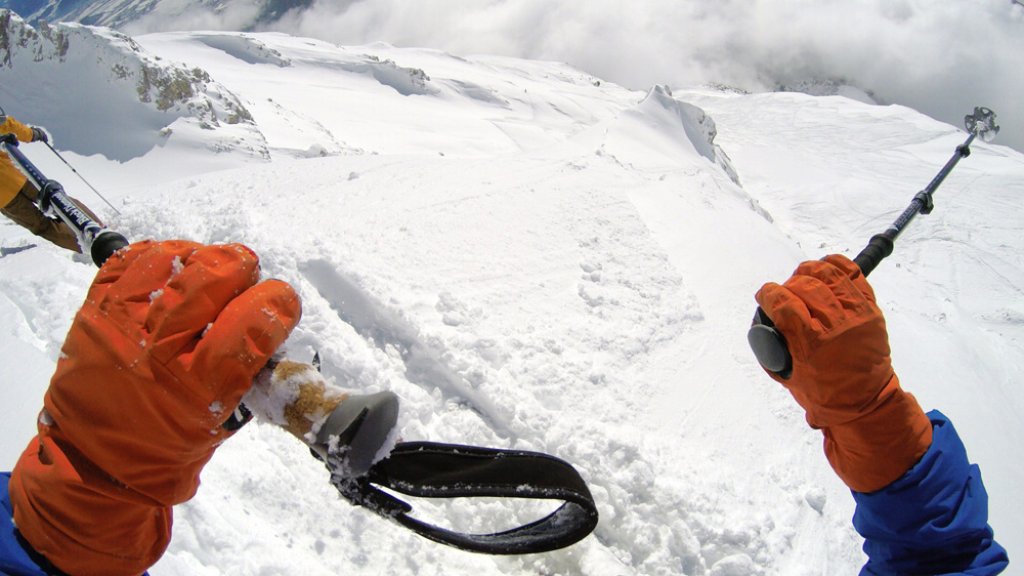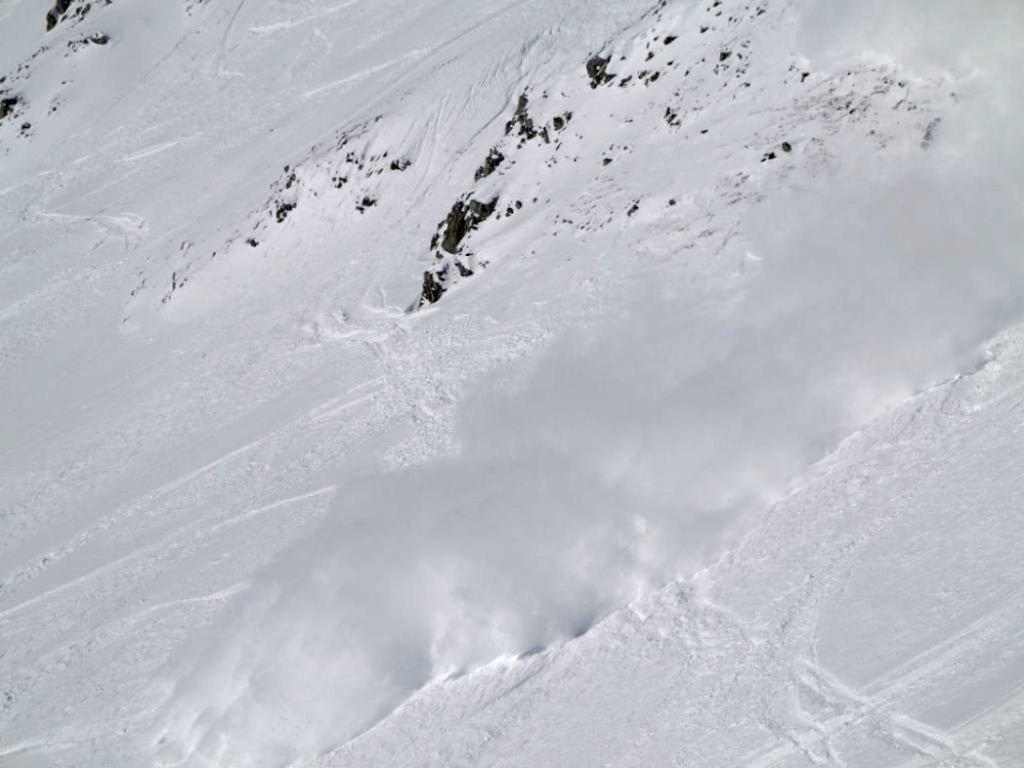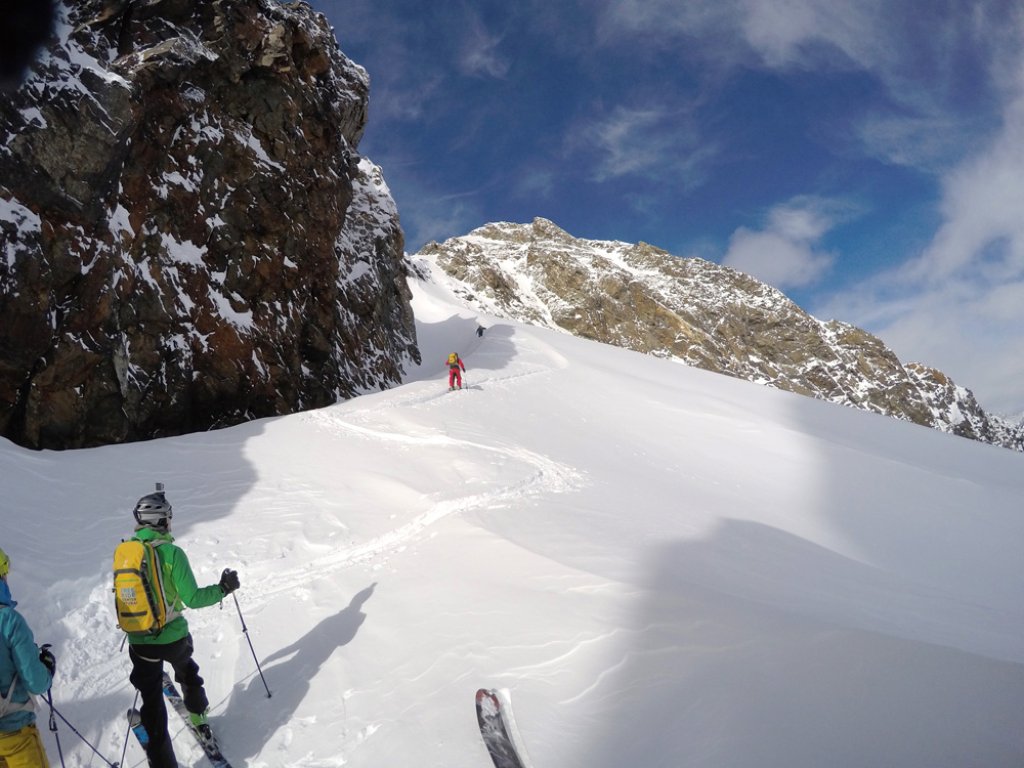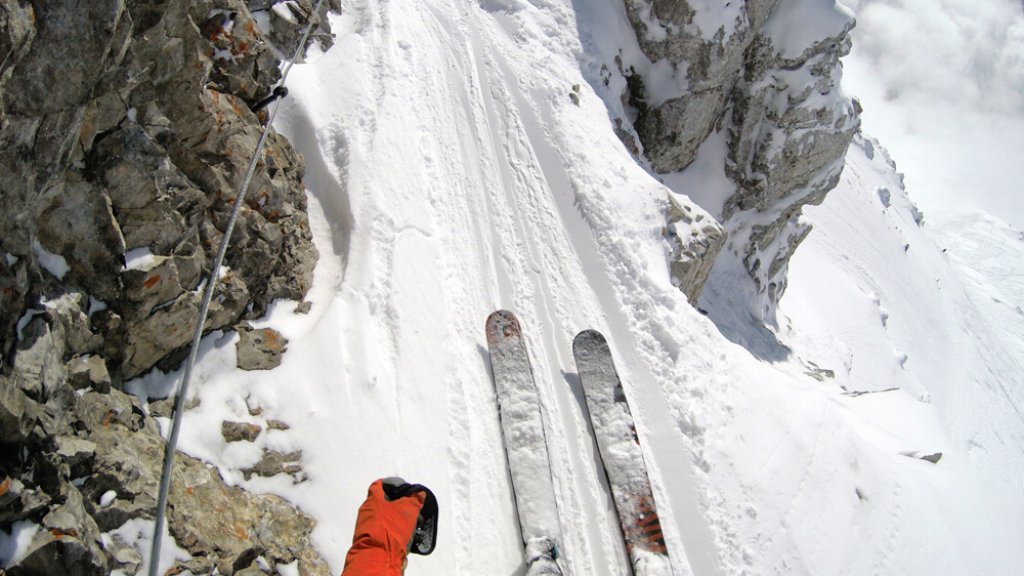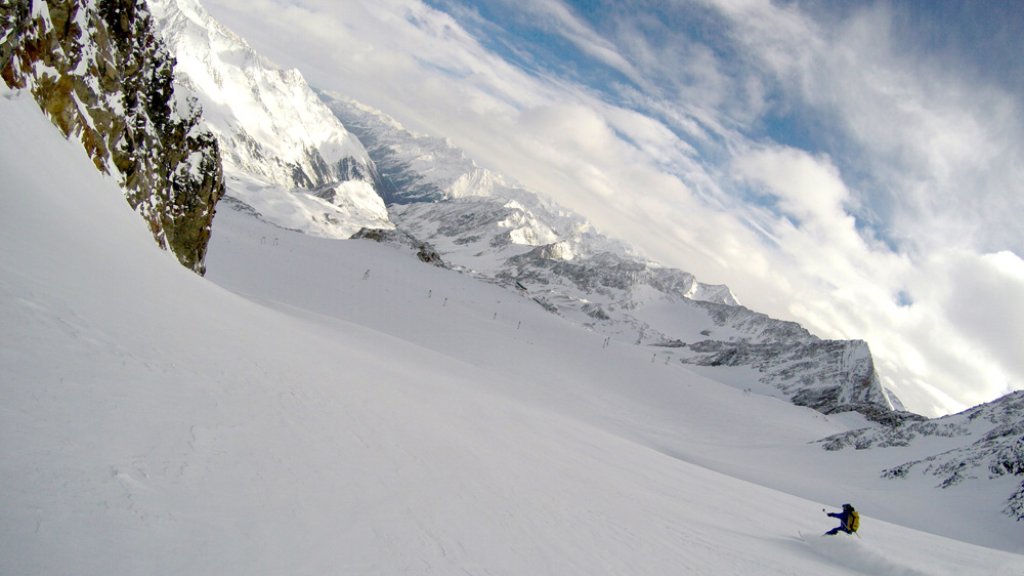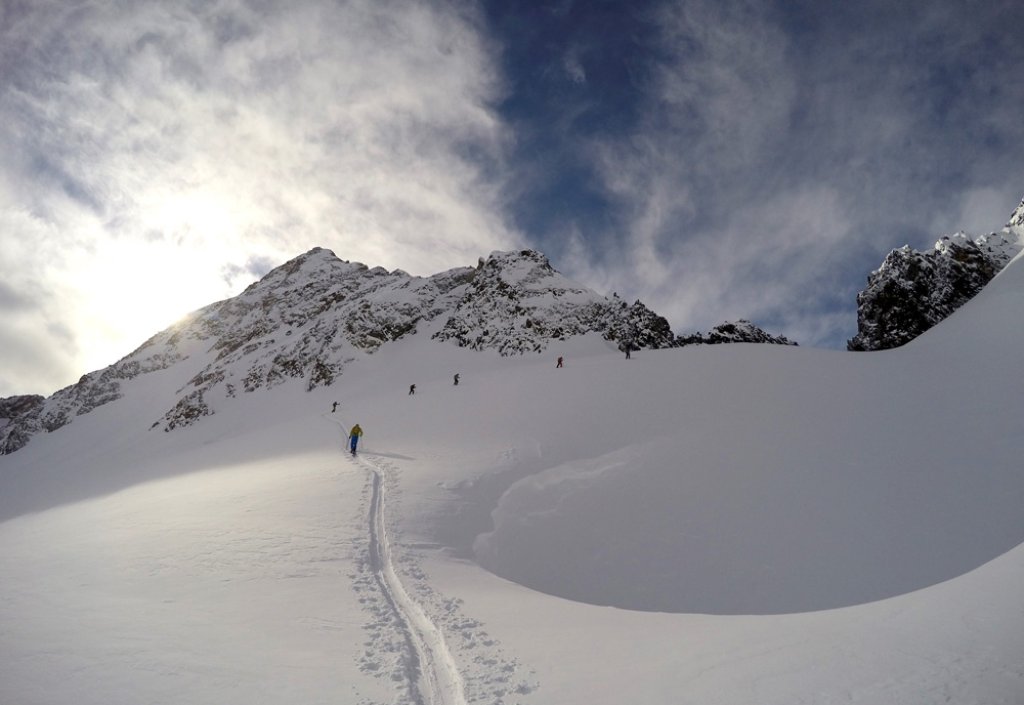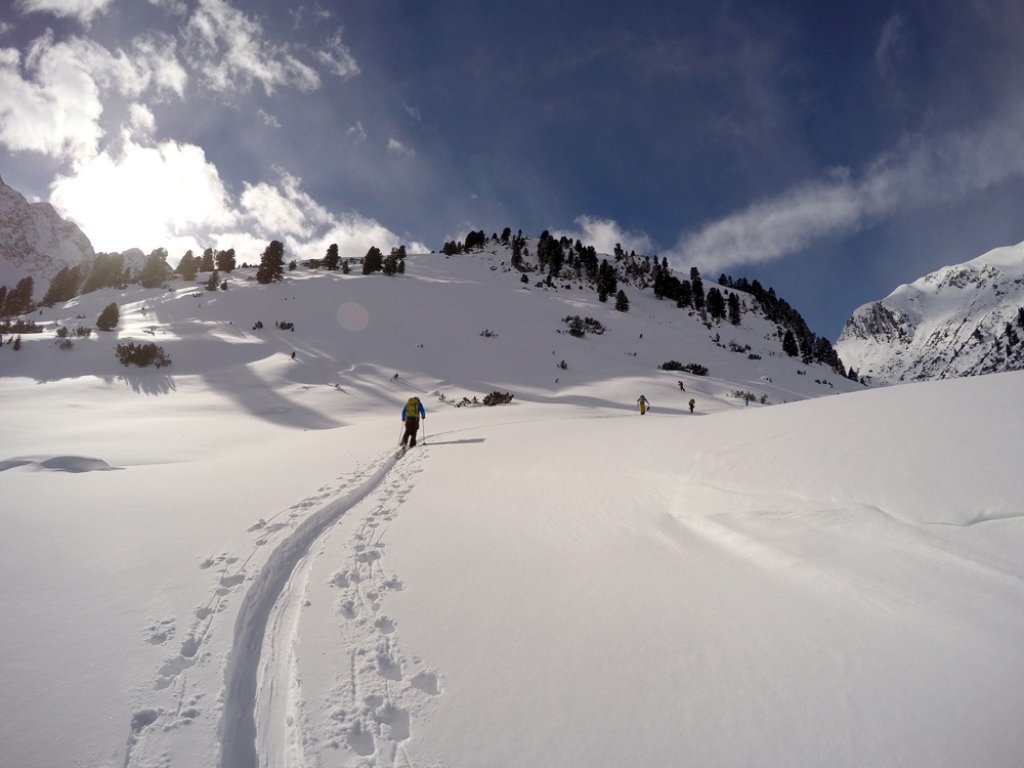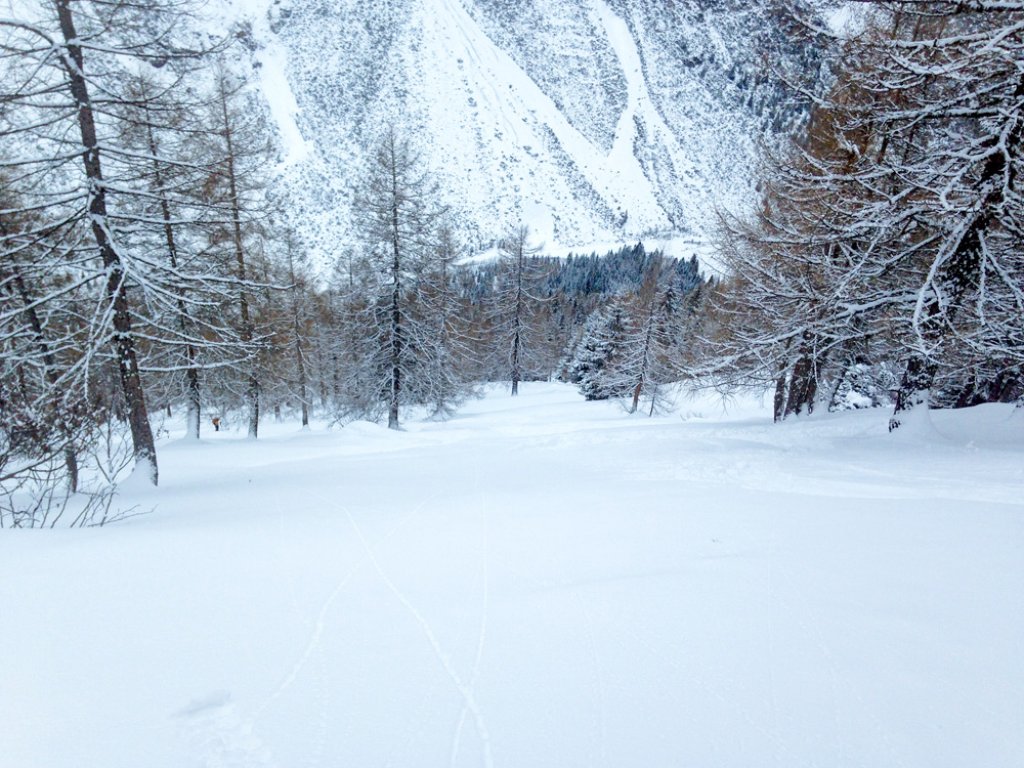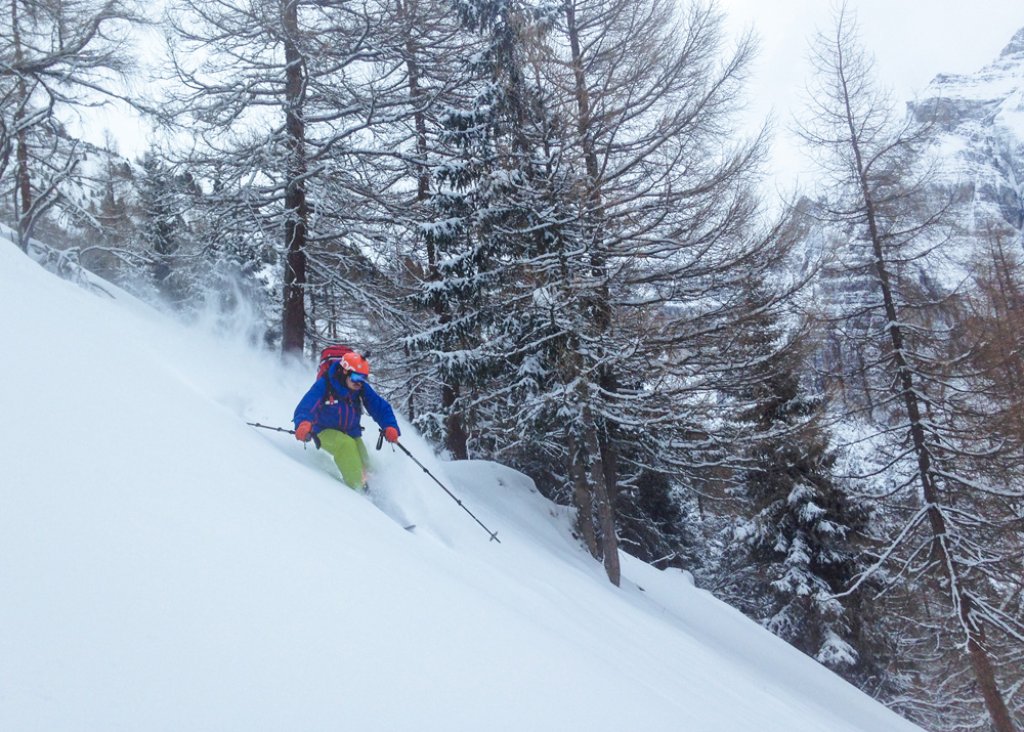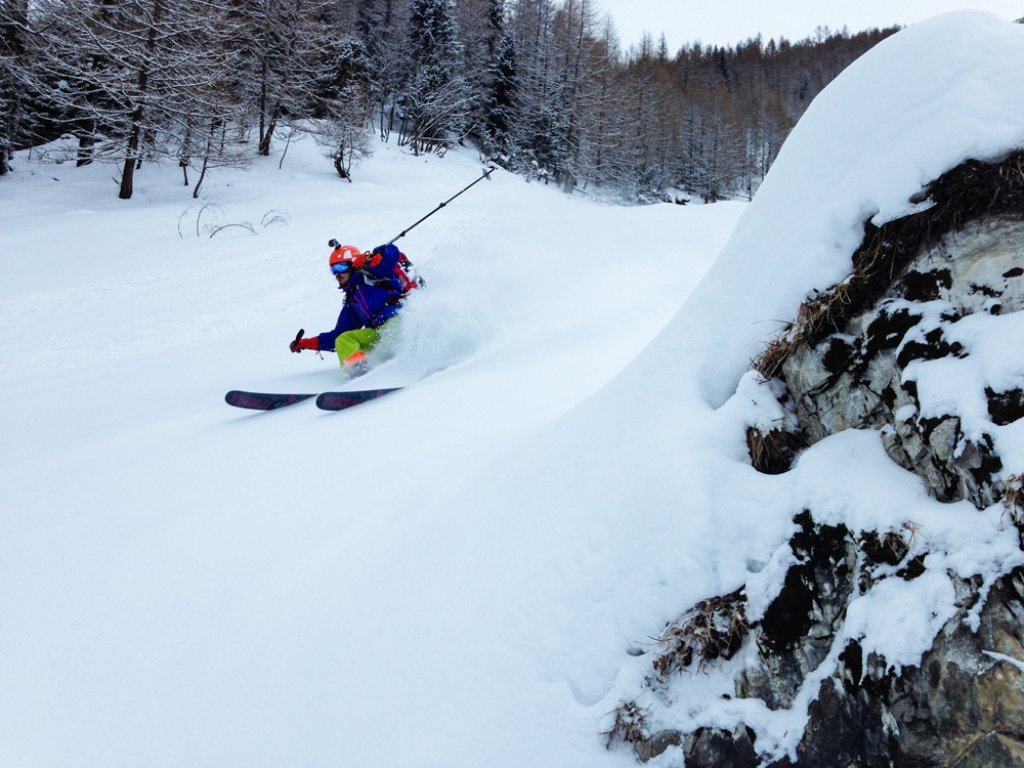Tatort Nordkette
This must be some kind of joke, I thought to myself as I stood at the Nordkette cable car for the first time, which was to take us up to the Seegrube der Nordkette, high above Innsbruck, at 8:15 am sharp. Patrick had to lead a group of regular guests up the glacier that day, so I joined several Innsbruck locals and pros to discover an area that had recently attracted negative attention due to the "human factor". I was quickly overtaken by other freeriders on the way from the parking lot to the cable car. Tyrolean hospitality came to an end at the cable car at the latest: getting a place in the first lane is a matter of honour at the Seegrube.
"Why do so few riders here have full equipment with them?" I asked my colleague from Innsbruck, who was trying to lighten the mood with a few jokes in the cable car. "The statistics seem to prove them right, you only ever get partially buried on the Nordkette," was my reply. We promptly crossed a slope that was around 38 degrees steep, with some freeriders entering the slope just above us and others completely blocking the narrow ridge track. No "Griaßti", no "Berg Heil", because after all, we were fighting for the same line.
This is exactly how I had imagined the area and the scene. Only the previous week, an avalanche had been triggered on the same slope, and while the rescuers were digging two partially buried victims out of the snow, other freeriders triggered another avalanche on the same slope. A Seegruben local described the incident as follows:
"As with all ski resorts in Europe, you are transported Disneyland-style up the mountain and then have the option of skiing down in the secured ski area. Or, as is now common practice on the Nordkette, people simply ski wherever the snow seems the most beautiful - because nothing ever seems to happen anyway. Especially at the start of the season, you can see how winter sports enthusiasts drift in completely carelessly: wherever and however they please."
And it seems that many freeriders don't realize, and perhaps more and more every winter, that the "wild side" begins right next to the edge of the ski route. And that a free wild run requires independent decision-making and a basic knowledge of the alpine area.
Unfortunately, word has apparently not yet gotten around to all locals that the free wild run, the free ski area, the high alpine mountain world, whatever you want to call this landscape, is not secured by the avalanche commission of the ski area.
But what happened a few weeks ago, on the first Sunday after the first heavy snowfalls of winter 2015 and winds of over 60 km/h, in a "tense three" (avalanche warning level 3 to 4), was described by the Seegruben local, who does not wish to be named, as "a disgrace for us winter sports enthusiasts".
"It's not enough that the free ski area is immediately entered, because we're talking about slopes that are around 45 degrees steep. No thought is given to what tactics could be used to master such tricky passages. A gondola on the Nordkette fits 50 people, two thirds of whom plunge into this steep terrain more or less simultaneously."
Now the predictable happened: a snow slab came down and swept two winter sports enthusiasts several hundred meters into the depths, burying one partially and one completely. While both were located and dug out by their well-equipped comrades, the hustle and bustle continued in the open ski area.
"So while helpers in the fresh avalanche cone were still searching the avalanche cone for further victims with avalanche transceivers switched to "search", they continued to ski happily above them. And not in the avalanche track, which is what instinct should actually tell you, no, they continued to indulge in untracked powder."
And the reaction was not long in coming, he continues: "While the buried victims have not even finished being dug out, they are buried again by a large slab of snow triggered by other winter sports enthusiasts. The size of the snow slab can possibly be explained by the fact that the snow first fell without wind, and then this loose layer of powder was blown in by fresh snow with wind and therefore a very large slab came off.
"Within a very short time, the yellow angel of the well-organized helicopter rescue in Tyrol appeared. The picture that presented itself to you was pure chaos: jeering "freeriders" next to buried victims struggling for breath. Uff, once again everything went well..."
And back to our traverse, towards an untracked south gully, we had to slow down again and again in the open slope. Freerider traffic jam on the Nordkette, our thighs were tired and we were already a little late. Yes, we were at the limit, but maybe there were other factors that I hadn't taken into account. And that's how it happened: I tried to complete the traverse with momentum, when suddenly a winter sportsman without equipment was standing there, his yellow jacket coming closer and closer, with a slope about 40 degrees steep below me. My braking maneuver triggered a snow slab, my skis were standing in the open at the back, just above the snow slab crack with a crack thickness of around 40 cm.
A queasy feeling: what would have happened, where was the mistake? Where were the many faults? And where were the red lights, which were so clearly visible in the video afterwards (number of freeriders, in front of and above me, too steep an area, tiredness, sunlight, speed when crossing and so on...). On the way home towards the Stubai Valley, I remembered a statistic that Bruce Tremper describes in his book "Avalanche Essentials": 92% of all avalanche victims are male, just like prison inmates in western industrialized nations. Furthermore, almost all male avalanche victims are between 26 and 39 years old, well educated, middle-income, athletic and very good skiers and snowboarders. Lo and behold, this probably applied to our entire group, if not to all the freeriders on the first cable car in the Seegrube that Saturday morning.
In his book "Thinking Fast, Thinking Slow", Daniel Kahneman asked himself how dangerous our thinking is. When do our intuitive and logical mental patterns confront each other, when am I confident enough to know what I can - or must - decide from my gut or via logic and methodology? In his bestselling book, he asks himself why people with the necessary basic knowledge, the right equipment and in what are actually relatively simple scenarios keep making serious mistakes.
